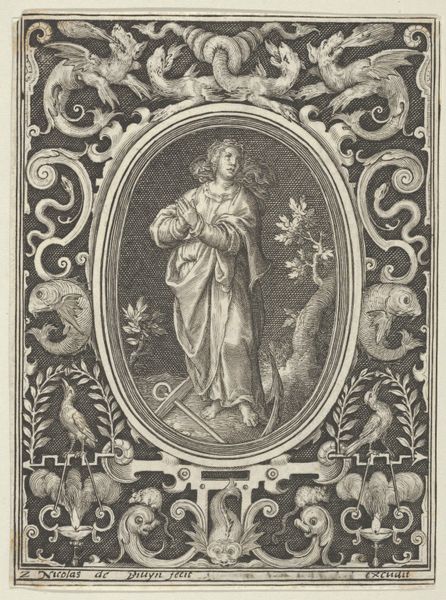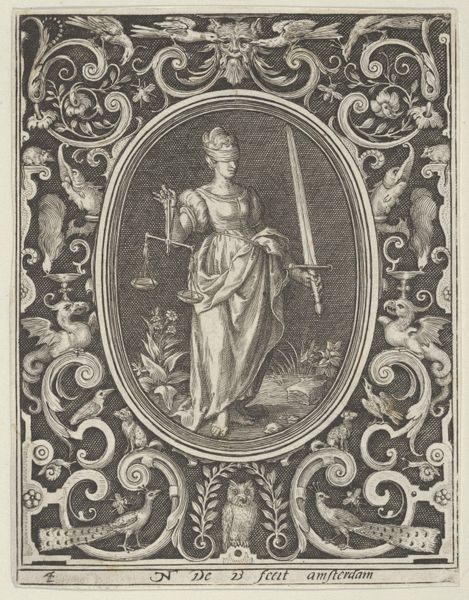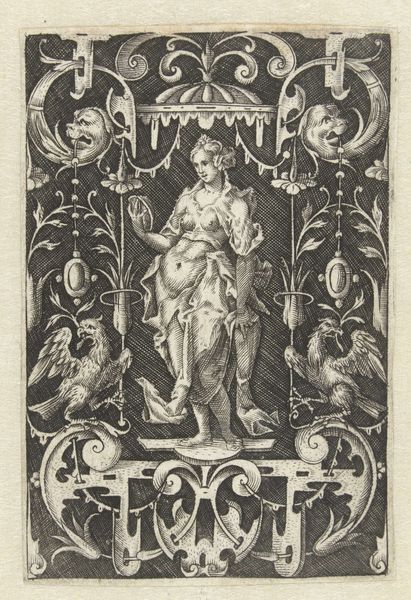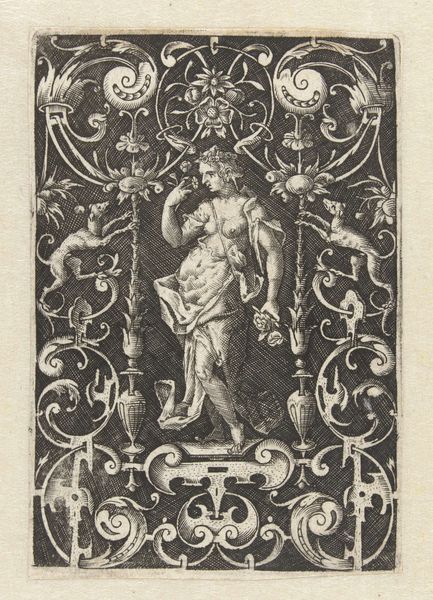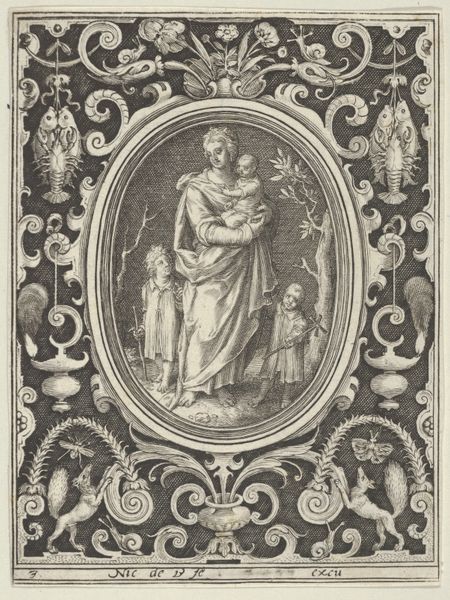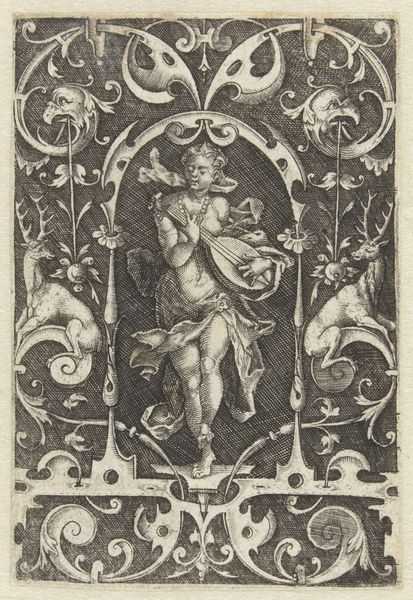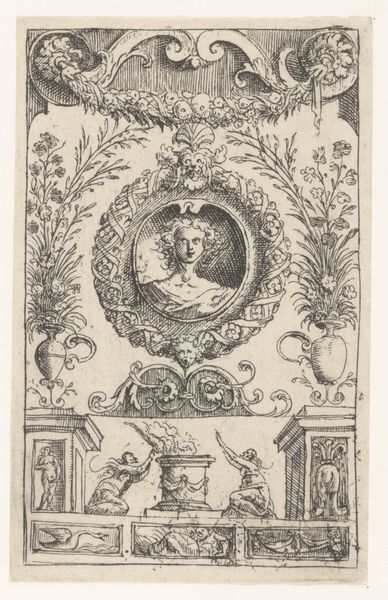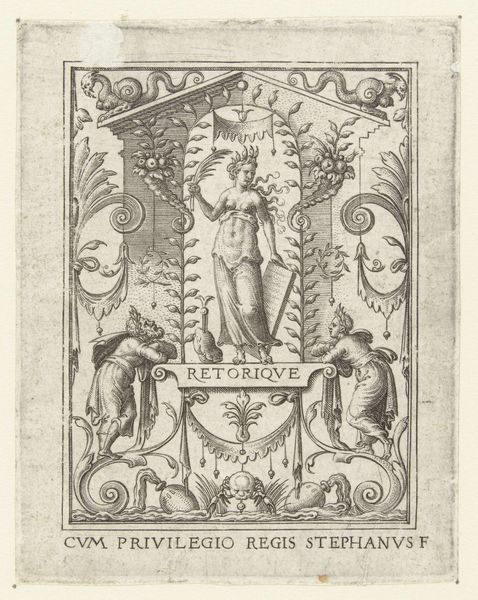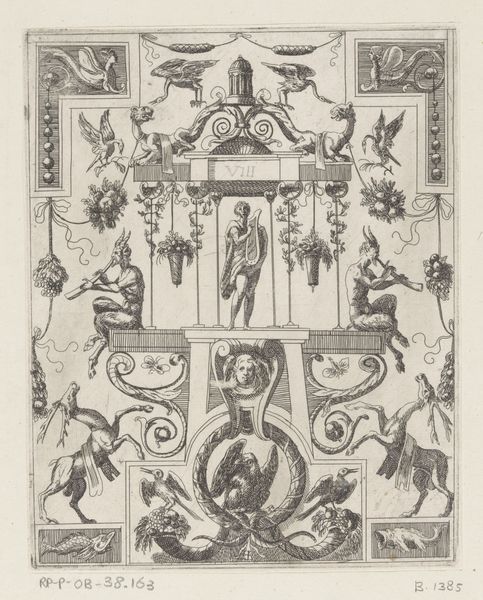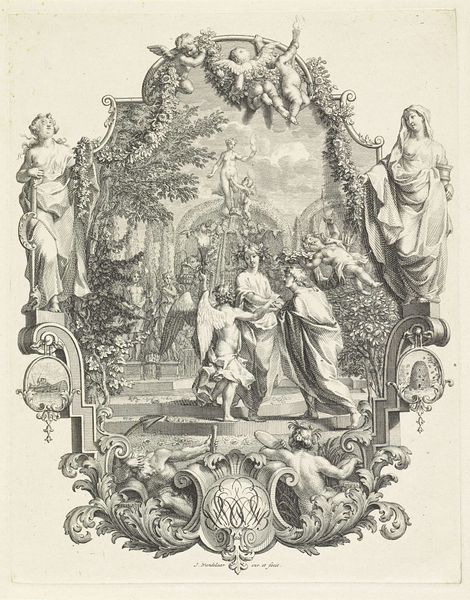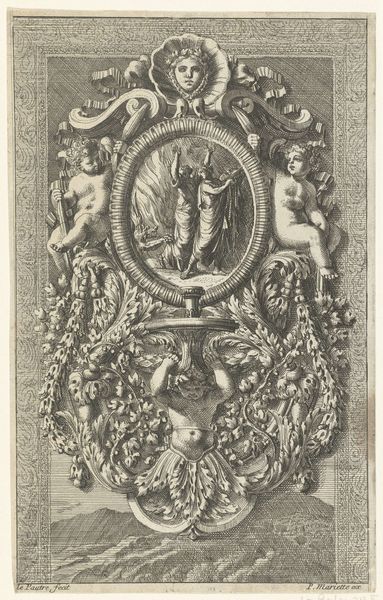
drawing, print, intaglio, engraving
#
portrait
#
drawing
#
baroque
# print
#
intaglio
#
figuration
#
cross
#
line
#
history-painting
#
engraving
Dimensions: Sheet: 4 1/4 × 3 1/4 in. (10.8 × 8.2 cm)
Copyright: Public Domain
Curator: Today we’re looking at Nicolaes de Bruyn’s print, Faith, from the Cardinal Virtues, dating to sometime between 1648 and 1656. Editor: I’m immediately drawn to how ornate it is, like a page pulled straight out of a fairytale book, all those intricate details framing the central figure! Curator: Indeed! This intaglio engraving, currently residing at the Metropolitan Museum of Art, really exemplifies the Baroque style. It's interesting to consider how faith was visually constructed during this era. We might examine how the image portrays the female allegory, and the subtle reinforcement of existing power structures by these archetypes. Editor: Archetypes aside, there's a quiet strength about her. Even though the frame feels quite busy and decorative, her face seems serene, gazing slightly off in the distance. I get the impression she sees something beyond us. Curator: That upward gaze certainly positions her in relation to a higher power, a crucial element in depictions of Faith during the period. Note the cross she clutches and how this imagery aimed to solidify faith within a society undergoing significant religious and political upheaval. Editor: Yes, that cross, she isn't flaunting it, more like holding onto it. And the frame is bursting with images—those griffins, vases of flowers, even mischievous creatures chasing each other. They all create this wild, contained world, a backdrop to her faith. Curator: The ornamental framework performs a double duty: it reinforces the virtue being depicted, while simultaneously reminding viewers of the world outside and how these virtues are meant to guide actions in it. Consider also, how printed images circulated within broader networks of knowledge and political discourse. Editor: You're right; it’s like two worlds coexisting, one wild and earthly, one ethereal and steadfast. Even today, with faith itself so widely debated, it is the ability to hold to what you believe with certainty in times of chaos. Curator: Precisely! The work reminds us that these images always reflect more than individual spirituality, resonating with historical contingencies and ongoing sociopolitical contexts. Editor: I like seeing how that old image manages to spark something new each time, a link between what once was, what we see now, and perhaps what we can believe in next.
Comments
No comments
Be the first to comment and join the conversation on the ultimate creative platform.
